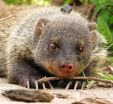(Press-News.org) This new infrared image from ESO's VISTA telescope shows the globular cluster 47 Tucanae in striking detail. This cluster contains millions of stars, and there are many nestled at its core that are exotic and display unusual properties. Studying objects within clusters like 47 Tucanae may help us to understand how these oddballs form and interact. This image is very sharp and deep due to the size, sensitivity, and location of VISTA, which is sited at ESO's Paranal Observatory in Chile.
Globular clusters are vast, spherical clouds of old stars bound together by gravity. They are found circling the cores of galaxies, as satellites orbit the Earth. These star clumps contain very little dust and gas — it is thought that most of it has been either blown from the cluster by winds and explosions from the stars within, or stripped away by interstellar gas interacting with the cluster. Any remaining material coalesced to form stars billions of years ago.
These globular clusters spark a considerable amount of interest for astronomers — 47 Tucanae, otherwise known as NGC 104, is a huge, ancient globular cluster about 15 000 light-years away from us, and is known to contain many bizarre and interesting stars and systems.
Located in the southern constellation of Tucana (The Toucan), 47 Tucanae orbits our Milky Way. At about 120 light-years across it is so large that, despite its distance, it looks about as big as the full Moon. Hosting millions of stars, it is one of the brightest and most massive globular clusters known and is visible to the naked eye [1]. In amongst the swirling mass of stars at its heart lie many intriguing systems, including X-ray sources, variable stars, vampire stars, unexpectedly bright "normal" stars known as blue stragglers (eso1243), and tiny objects known as millisecond pulsars, small dead stars that rotate astonishingly quickly [2].
Red giants, stars that have exhausted the fuel in their cores and swollen in size, are scattered across this VISTA image and are easy to pick out, glowing a deep amber against the bright white-yellow background stars. The densely packed core is contrasted against the more sparse outer regions of the cluster, and in the background huge numbers of stars in the Small Magellanic Cloud are visible.
This image was taken using ESO's VISTA (Visible and Infrared Survey Telescope for Astronomy) as part of a survey of the region of the Magellanic Clouds, two of the closest known galaxies to us. 47 Tucanae, although much closer than the Clouds, by chance lies in the the foreground of the Small Magellanic Cloud (eso1008), and was snapped during the survey.
VISTA is the world's largest telescope dedicated to mapping the sky. Located at ESO's Paranal Observatory in Chile, this infrared telescope, with its large mirror, wide field of view and sensitive detectors, is revealing a new view of the southern sky. Using a combination of sharp infrared images — such as the VISTA image above — and visible-light observations allows astronomers to probe the contents and history of objects like 47 Tucanae in great detail.
###
Notes
[1] There are over 150 globular clusters orbiting our galaxy. 47 Tucanae is the second most massive after Omega Centauri (eso0844).
[2] Millisecond pulsars are incredibly quickly rotating versions of regular pulsars, highly magnetised, rotating stellar remnants that emit bursts of radiation as they spin. There are 23 known millisecond pulsars in 47 Tucanae — more than in all other globular clusters bar one, Terzan 5 (eso0945).
More information
ESO is the foremost intergovernmental astronomy organisation in Europe and the world's most productive astronomical observatory. It is supported by 15 countries: Austria, Belgium, Brazil, the Czech Republic, Denmark, France, Finland, Germany, Italy, the Netherlands, Portugal, Spain, Sweden, Switzerland and the United Kingdom. ESO carries out an ambitious programme focused on the design, construction and operation of powerful ground-based observing facilities enabling astronomers to make important scientific discoveries. ESO also plays a leading role in promoting and organising cooperation in astronomical research. ESO operates three unique world-class observing sites in Chile: La Silla, Paranal and Chajnantor. At Paranal, ESO operates the Very Large Telescope, the world's most advanced visible-light astronomical observatory and two survey telescopes. VISTA works in the infrared and is the world's largest survey telescope and the VLT Survey Telescope is the largest telescope designed to exclusively survey the skies in visible light. ESO is the European partner of a revolutionary astronomical telescope ALMA, the largest astronomical project in existence. ESO is currently planning the 39-metre European Extremely Large optical/near-infrared Telescope, the E-ELT, which will become "the world's biggest eye on the sky".
Links
http://www.eso.org/public/germany/images/eso1302a/
http://www.eso.org/public/france/images/eso1302a/
http://www.eso.org/public/italy/images/eso1302a/
http://www.eso.org/public/portugal/images/eso1302a/
http://www.eso.org/public/spain/images/eso1302a/ END
A jumble of exotic stars
New VISTA snap of star cluster 47 Tucanae
2013-01-10
ELSE PRESS RELEASES FROM THIS DATE:
Rhythms in the brain help give a sense of location, study shows
2013-01-10
Research at the University of Edinburgh tracked electrical signals in the part of the brain linked to spatial awareness.
The study could help us understand how, if we know a room, we can go into it with our eyes shut and find our way around. This is closely related to the way we map out how to get from one place to another
Scientists found that brain cells, which code location through increases in electrical activity, do not do so by talking directly to each other. Instead, they can only send each other signals through cells that are known to reduce electrical activity.
This ...
Government funding for 'super-material'
2013-01-10
Royal Holloway is among a select group of top universities to receive £21.5 million in government funding to explore commercial uses for graphene.
Announced by the Chancellor of the Exchequer, George Osborne just after Christmas, the funding will focus attention on the so-called 'super-material' graphene, one of the thinnest, strongest and most conductive materials known to man.
The project at Royal Holloway will focus on using graphene to develop new equipment that can operate at high frequencies. This could include devices useful for security purposes, which can ...
Limiting polyunsaturated fatty acid levels in pregnancy may influence body fat of children
2013-01-10
Southampton researchers have demonstrated that mothers who have higher levels of n-6 polyunsaturated fatty acids (PUFAs), which are found in cooking oils and nuts, during pregnancy have fatter children.
The study, carried out by the Medical Research Council (MRC) Lifecourse Epidemiology Unit, University of Southampton, assessed the fat and muscle mass of 293 boys and girls at four and six years, who are part of the Southampton Women's Survey (SWS), a large prospective mother-offspring cohort.
Their assessments were compared to the concentrations of PUFAs which were ...
Southampton scientist develops strongest, lightest glass nanofibres in the world
2013-01-10
The University of Southampton's Optoelectronics Research Centre (ORC) is pioneering research into developing the strongest silica nanofibres in the world.
Globally the quest has been on to find ultrahigh strength composites, leading ORC scientists to investigate light, ultrahigh strength nanowires that are not compromised by defects. Historically, carbon nanotubes were the strongest material available, but high strengths could only be measured in very short samples just a few microns long, providing little practical value.
Now research by ORC Principal Research Fellow ...
Solving puzzles without a picture
2013-01-10
One of the most difficult problems in the field of genomics is assembling relatively short "reads" of DNA into complete chromosomes. In a new paper published in Proceedings of the National Academy of Sciences an interdisciplinary group of genome and computer scientists has solved this problem, creating an algorithm that can rapidly create "virtual chromosomes" with no prior information about how the genome is organized.
The powerful DNA sequencing methods developed about 15 years ago, known as next generation sequencing (NGS) technologies, create thousands of short fragments. ...
Marriage linked to better survival in middle age
2013-01-10
Could marriage, and associated companionship, be one key to a longer life? According to new research, not having a permanent partner, or spouse, during midlife is linked to a higher risk of premature death during those midlife years. The work, by Dr. Ilene Siegler and colleagues from Duke University Medical Center in the US, is published online in Springer's journal Annals of Behavioral Medicine.
Survival through middle age to become elderly is expected; therefore understanding who does not survive to become elderly and why is important. Siegler and colleagues looked ...
Banded mongooses structure monosyllabic sounds in a similar way to humans
2013-01-10
This press release is available in German.
Animals are more eloquent than previously assumed. Even the monosyllabic call of the banded mongoose is structured and thus comparable with the vowel and consonant system of human speech. Behavioral biologists from the University of Zurich have thus become the first to demonstrate that animals communicate with even smaller sound units than syllables.
When humans speak, they structure individual syllables with the aid of vowels and consonants. Due to their anatomy, animals can only produce a limited number of distinguishable ...
New report: The reach and impact of mathematical sciences
2013-01-10
The Mathematical Sciences in 2025, a new report from the National Research Council, finds that the mathematical sciences are an increasingly integral component of many disciplines -- including biology, medicine, the social sciences, business, advanced design, and climate studies. However, the expanding role of the mathematical sciences over the past 15 years has not been matched by a comparable increase in federal funding, and the number of federal agencies that provide significant support for this research is considerably smaller than the number that profit from it.
The ...
Is there a period of increased vulnerability for repeat traumatic brain injury?
2013-01-10
New Rochelle, NY, January 10, 2013—Repeat traumatic brain injury affects a subgroup of the 3.5 million people who suffer head trauma each year. Even a mild repeat TBI that occurs when the brain is still recovering from an initial injury can result in poorer outcomes, especially in children and young adults. A metabolic marker that could serve as the basis for new mild TBI vulnerability guidelines is described in an article in Journal of Neurotrauma, a peer-reviewed journal from Mary Ann Liebert, Inc., publishers. The article is available free on the Journal of Neurotrauma ...
New tool to help brain surgeons 1 step closer to operating room
2013-01-10
WEST LAFAYETTE, Ind. - A new tool that could allow for faster, more comprehensive testing of brain tissue during surgery successfully identified the cancer type, grade and tumor margins in five brain surgery patients, according to a Purdue University and Brigham and Women's Hospital study.
The tool sprays a microscopic stream of charged solvent onto the tissue surface to gather information about its molecular makeup and produces a color-coded image that reveals the nature and concentration of tumor cells.
Researchers analyzed specimens removed from the patients, but ...
LAST 30 PRESS RELEASES:
Structure of dopamine-releasing neurons relates to the type of circuits they form for smell-processing
Reducing social isolation protects the brain in later life
Keeping the heart healthy increases longevity even after cancer
Young adults commonly mix cannabis with nicotine and tobacco
Comprehensive review illuminates tau protein's dual nature in brain health, disease, and emerging psychiatric connections
Book prepares K-12 leaders for the next public health crisis
Storms in the Southern Ocean mitigates global warming
Seals on the move: Research reveals key data for offshore development and international ecology
Sports injuries sustained during your period might be more severe
World's first successful 2 Tbit/s free-space optical communication using small optical terminals mountable on satellites and HAPS
Can intimate relationships affect your heart? New study says ‘yes’
Scalable and healable gradient textiles for multi‑scenario radiative cooling via bicomponent blow spinning
Research shows informed traders never let a good climate crisis go to waste
Intelligent XGBoost framework enhances asphalt pavement skid resistance assessment
Dual-function biomaterials for postoperative osteosarcoma: Tumor suppression and bone regeneration
New framework reveals where transport emissions concentrate in Singapore
NTP-enhanced lattice oxygen activation in Ce-Co catalysts for low-temperature soot combustion
Synergistic interface engineering in Cu-Zn-Ce catalysts for efficient CO2 hydrogenation to methanol
COVID-19 leaves a lasting mark on the human brain
Scientists use ultrasound to soften and treat cancer tumors without damaging healthy tissue
Community swimming program for Black youth boosts skills, sense of belonging, study finds
Specific depressive symptoms in midlife linked to increased dementia risk
An ‘illuminating’ design sheds light on cholesterol
Who is more likely to get long COVID?
Study showcases resilience and rapid growth of “living rocks”
Naval Research Lab diver earns Office of Naval Research 2025 Sailor of the Year
New Mayo-led study establishes practical definition for rapidly progressive dementia
Fossil fuel industry’s “climate false solutions” reinforce its power and aggravate environmental injustice
Researchers reveal bias in a widely used measure of algorithm performance
Alcohol causes cancer. A study from IOCB Prague confirms damage to DNA and shows how cells defend against it
[Press-News.org] A jumble of exotic starsNew VISTA snap of star cluster 47 Tucanae



